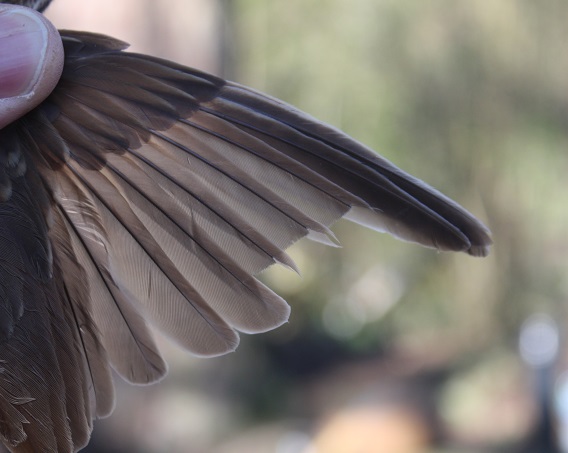These were the first two sessions of the fourth year of the ongoing Ravensroost coppice project. The aim of the project is to follow the changes in the 8 year coppice cycle area in the southern section of Ravensroost Woods. The areas studied comprise 4 coupes at different stages of the coppice cycle, each approximately 2 years apart and a fifth, control, area in the northern part of the wood (the north side of the bridle path). On Friday I was joined by Jonny and we did areas 1,2 and 3. Area 1 was largely coppiced last year and the vegetation height (excluding the guard oaks) is 1m or so, on average. The area with the tallest average height is area 2, with a mean height of over 3m. Then area 3 is in between, with a mean height of about 3m.
Saturday morning I was on my own, managing areas 4 and 5. Area 4 was coppiced the year that I started the project and has a mean height of 2m. The control area comprises areas coppiced on a 25 year cycle (it hasn't been done since I first started going to Ravensroost in 1998) or else not coppiced at all.
The list for the sessions was as follows:
Area 1: Long-tailed Tit (1); Wren (1); Dunnock 1(2); Robin (1); Song Thrush 1; Blackcap 2
Area 2: Great Tit (1); Wren 1(1); Dunnock (2); Robin 1; Blackcap 5(1); Garden Warbler 2; Chiffchaff 1(2); Bullfinch (2)
Area 3: Great Tit 1(3); Marsh Tit (1); Long-tailed Tit (1); Robin 1(1); Song Thrush 2; Blackbird 1; Blackcap 2(1); Chiffchaff (1); Willow Warbler 1
Area 4: Treecreeper 1(1); Robin 1(1); Song Thrush 1(1); Blackcap 1; Chiffchaff (1); Willow Warbler 1
Area 5: Blue Tit 4(1); Great Tit (1); Marsh Tit (2); Wren 1; Robin 1; Blackbird (1); Blackcap (1); Chiffchaff 1(2)
Totals: 34 ringed from 12 species and 35 retrapped from 13 species.
The highlights for me were the first Garden Warblers of the year and three fledgling Song Thrushes. One of the youngsters, when the wing was spread to look at the telltale signs of a juvenile bird, showed that early breeding has its pitfalls. Three of the secondary feathers had broken off along a clear fault line, which will correspond to a problem in the food supply at a critical time in its development:

It was also gratifying to retrap three of my colour ringed Marsh Tits. The two caught in the control area were almost certainly a pair: a male and female, about 1m apart, in the net, at the same time. The female was ringed as a juvenile last October. She had a well-developed brood patch, at a stage that would almost certainly mean she is already laying eggs. The male was also one of last year's fledglings. Great to see that two of last year's birds have established a territory and are breeding in the wood. I am extremely hopeful that the Ravens Retreat extension to the wood will help expand the Marsh Tit population, in due course. ST / JC
